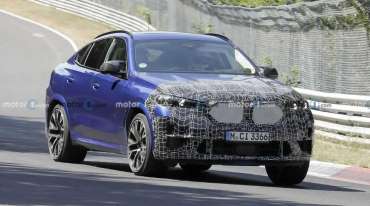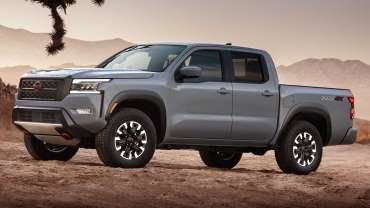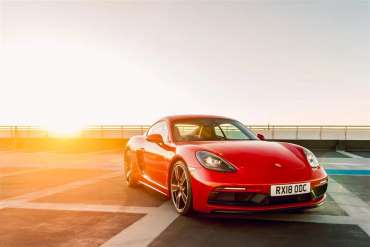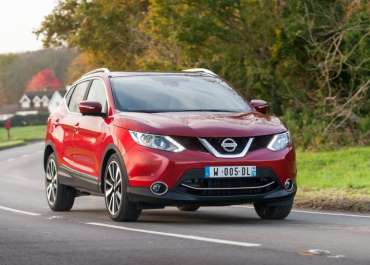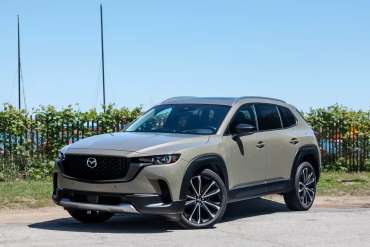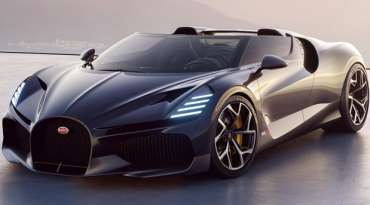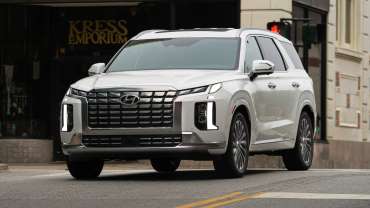
Worldcarblog.com
New BMW X6 photographed with minimal camouflage (PHOTO)
The Bavarian company is no longer wasting time camouflaging the upgraded X6 M during pre-production testing. Of course, they hid the appearance of the front part a bit, but almost the entire rest of the vehicle was now photographed without camouflage during the last evaluations at the Nürburgring.
Obviously, the biggest changes will be at the front of the car, which BMW continues to successfully hide, and expect a new bumper, lights, radiator grille, as well as parts of the engine cover.
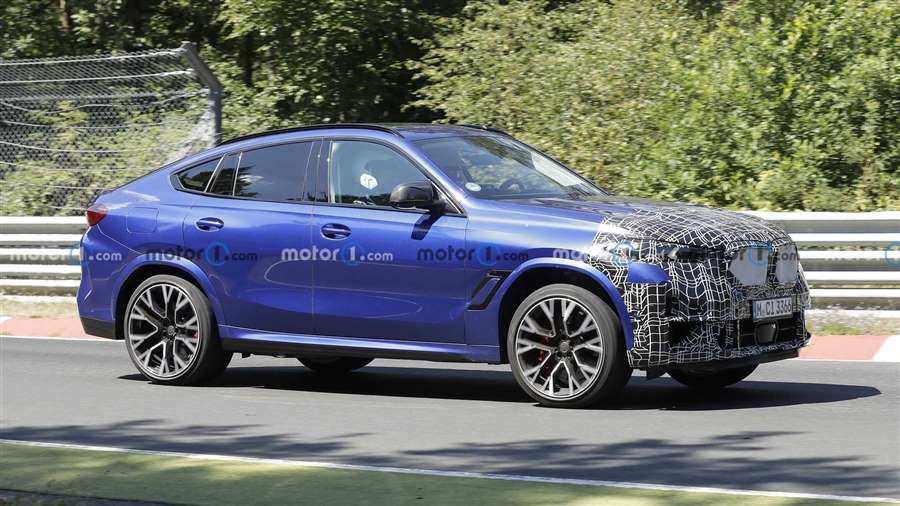
It is likely that the main item of this redesign will be new, thinner headlights and a slightly redesigned radiator grille. Below them, there is a bumper that will have lower openings and be much narrower compared to the current model.
As for the appearance of the rear, it is expected that BMW will stay true to the current solution, and that there will not be many changes at the rear. The prototype spotted at the Nürburgring has an identical rear end to the current generation, so the company from Munich did not bother with camouflage. However, it would not be difficult for BMW to install new taillights with similar dimensions but a different design.
Spy photographers were unable to capture the interior, but it appears to be camouflaged as well. This could mean that the new BMW X6 will get the latest iDrive 8 software with a curved screen, a solution we've already seen on the electric iX model. Other changes in the cabin are expected, but still minimal.
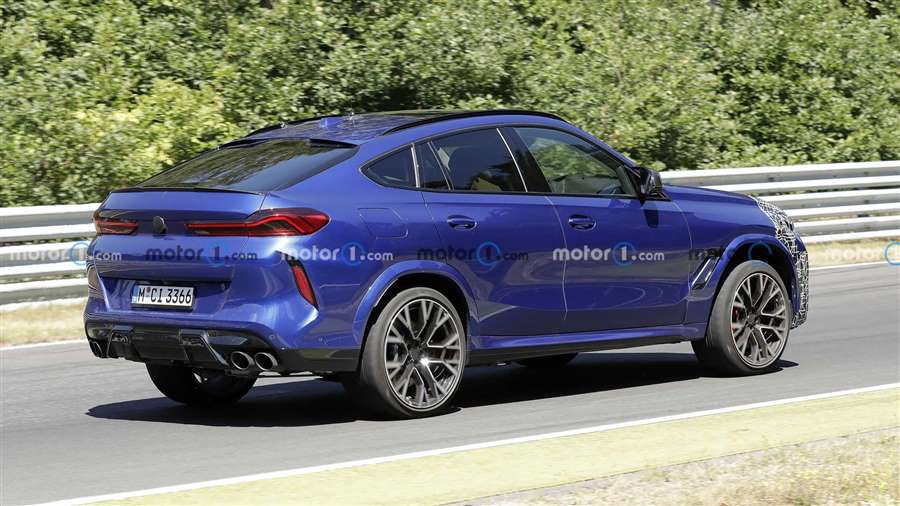
As far as the power unit of the BMW X6 M is concerned, no changes are expected. This means that this performance SUV will still be powered by a 4.4-liter engine with 625 hp in the Competition edition. The official premiere of the redesigned BMW X6 is expected soon, but the date is still unknown.
2022 Nissan Frontier review
The Nissan Frontier pickup truck has been updated for 2022. It's more current, with great innovation in the lodge and a ride quality to fulfill the guidelines of today. Notwithstanding another lodge and suspension, the frame has been modified and the outside styling gets a full makeover.
The Frontier stays medium sized with a similar wheelbase of 126 inches and a similar 5-foot bed on the group taxi, and longer wheelbase with 6-foot bed on the lengthy taxi. Be that as it may, the general length of the two forms has been expanded by 4.5 inches, all at the grille and front guard.
The new Frontier is as yet muscular, in the event that less particular in light of the fact that such countless trucks since, have gone for a comparable look. The 2022 Frontier has protruding bumpers and a long etched hood that safeguards its 3.8-liter V-6. It produces 310 pull and 281 pound-feet of force, mated to a 9-speed programmed transmission.
The drivetrain powers the back tires in standard setup, while parttime 4WD with slope drop control is accessible. It's a strong powertrain, the motor smooth and transmission responsive. It can tow 6,720 pounds-that is the two-wheel-drive expanded taxi which comes standard with a trailer influence control, a framework that naturally spots the brakes assuming it feels anything beginning to meander.
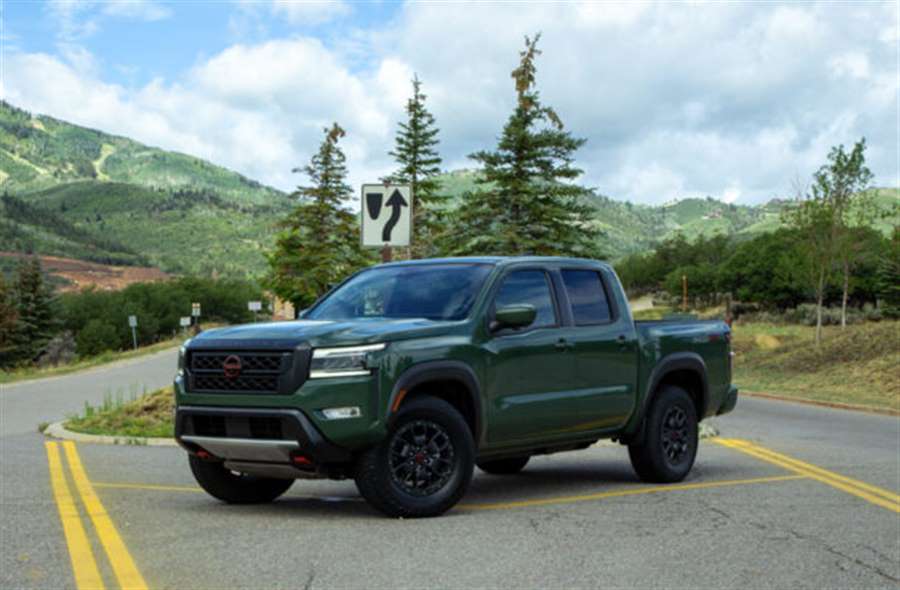
The new Frontier likewise handles better, with less body roll thanks to a greater stabilizer bar in front and reexamined bar in the back.
The Pro-4X model, for serious rough terrain use, accompanies Bilstein dampers, slide plates to safeguard the lower part of the motor, move case, and gas tank, in addition to a Dana back pivot and electronic locking back differential, There's likewise a Pro-X without 4WD, with simply the Bilsteins however every one of the looks, including 32-inch Hankook off-road tires mounted on 17-inch combination wheels.
The lodge gets up to speed in innovation, with a 8.0-inch touchscreen with Apple CarPlay/Android Auto, a 7.0-inch data show, and four USB ports.
The EPA appraised the back tire drive Frontier at 18 mpg city, 24 expressway, 20 consolidated, with the four-wheel drive at 17/22/19 mpg.
It hasn't been crash tried at this point, and programmed crisis slowing down isn't standard. Vulnerable side screens, programmed high bars, and an encompass view camera framework can be requested.
Model Lineup
Made in Mississippi, the Frontier comes in S, SV and Pro-X models, with RWD or 4WD, and as a lengthy taxi or group taxi.
The Frontier S begins at $29,015 for the 2WD broadened taxi, or $30,515 for 2WD group taxi. Four-wheel drive adds $3,200 or $3,000, separately. It's outfitted with Bluetooth, four USB ports, LED taillights, 16-inch steel wheels, and trailer influence control.
The SV costs $31,715 and adds a power driver seat, 17-inch composite wheels, a tow-pull driving mode, power mirrors, and programmed crisis slowing down.
The rundown of discretionary gear incorporates warmed front seats, a Fender sound framework, and encompass view camera framework.
The $35,415 Pro-X and $38,415 Pro-4X are group taxis. They have a 9.0-inch touchscreen with route, 18-inch combination wheels, more pallet plates, and Bilstein shocks.
Outside
The Frontier has been more than updated, it's been changed into a precise and square shaped ish truck that is the style today. The word Frontier shows up huge on the rear end, which for 2022 is damped so it can't throw down, or up.
The protruding and square shaped bumpers propose a fighter's shoulders and biceps. The subtleties of the Pro-X make it look considerably harder, with an exceptionally noticeable pallet plate in front, red tow snares that stick out of the sash, vertical admissions for cooling air, dark compound wheels, and LED daytime running lights.
Inside
The Frontier's overhauled inside is obviously superior to that in the past truck. Depend on it, it's tough like the outside however more quiet, with better materials and sound stifling. On the interstate, the lodge is practically quiet.
An enormous touchscreen and keenly found controls give the lodge a superior mentality for difficult work. It's equipped with bunches of capacity, and following an entire day's drive, the front seats demonstrated their value with great help.
The secondary lounge's better utilized for apparatuses and gear in broadened taxi structure. Its back seat is a minuscule seat. In the team taxi, rearward sitting arrangement travelers get more space to loosen up.
Driving Impressions
For a truck, the Frontier is sensibly quick, with a sizable amount of force for passing, with 310 pull and 281 pound-feet of force from its 3.8-liter V-6. It utilizes a 9-speed programmed whose initial three pinion wheels have low proportions that revive the speed increase from a standing beginning and at low paces. Cruising in higher pinion wheels, it answers sensibly rapidly when the driver requests more speed increase, without a second thought we've encountered with rival 9-speeds.
As far as possible is 6,570 pounds and payload limit 1,480 pounds.
However, it's the ride where the Frontier succeeds. Its casing has been supported and its suspension has been retuned to further develop dependability. The new Frontier is so created we could say it's uncanny, basically contrasted with the bygone one.
The controlling is speedier than the old truck, as well, and that is particularly searched town.
The Pro-4X, with Bilstein shocks, is more skilled over rough ground than the past variant.
Last Word
The 2022 Nissan Frontier has been totally upgraded, and it's presently one of the main moderate size trucks. It's a strong all-around entertainer, with the most recent in innovation accessible or standard in all cases. Make it a SV — and make it a group taxi for the best worth and utility.
Porsche 718 Cayman review
Porsche’s smallest coupe is a sublime sports car
Describing the Porsche Cayman as entry level may seem a little bit harsh, but it is ultimately the company’s cheapest sports car, despite offering huge levels of performance and fun.
Previously known as just the Cayman, it became the 718 Cayman when it and the convertible Boxster were updated in 2016 to come fitted with four-cylinder engines instead of more traditional six-cylinder ones. Practically everyone on the internet complained about the lack of a big engine, so Porsche now offers models with a 4.0-litre six-cylinder unit too.
As the 718 Cayman covers such a broad spectrum of abilities performance-wise, rivals range from the higher end of the Audi TT range to the Jaguar F-Type and Alpine A110.
When it was first launched in 2016, it came in two forms: 718 Cayman and 718 Cayman S. Easy. Since then, the range has expanded to include the T, GTS 4.0, GT4 and GT4 RS.
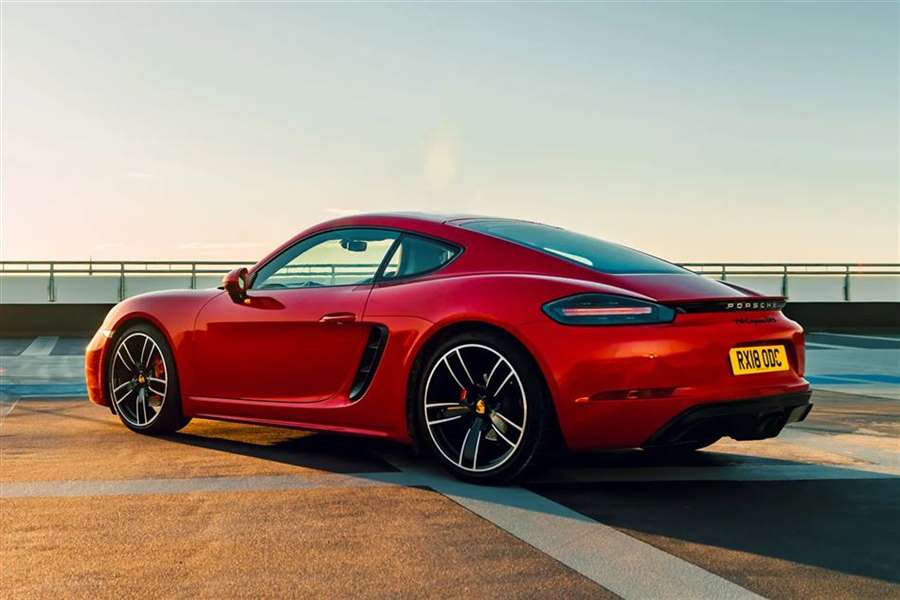
As is the case with most Porsches, a lot of equipment that you’d expect to be fitted as standard costs extra. While the basics are there, things like parking sensors, automatic wipers and cruise control all cost extra. If it’s a car you’ll be using everyday, you could end up adding the price significantly.
And while the interior is high-quality and impressive ergonomically, it now looks and feels a little dated next to latest versions of the 911 and Macan with their big screens and touch-sensitive areas on the centre console.
Keep reading to find out what we make of the Cayman. Our judging criteria includes the driving experience, interior quality, practicality, and what it’ll cost to run. Then in the verdict you can read if we recommend one or not.
Porsche 718 Cayman boot space, practicality and safety
The Porsche 718 Cayman is surprisingly practical for a two-seater sports car. The cabin is snug, but just right for a pair of occupants. Entry and exit is pretty straightforward, too, with doors that open easily and wide.
There are a couple of cubbies around the cabin and you can hang a coat behind the front seats. You also have two pop-out cupholders hidden above the glovebox, which itself is surprisingly large for a two-seater sports car. The door bins and centre armrest storage are far from being the most commodious, but we’re glad they’re here in the first place.
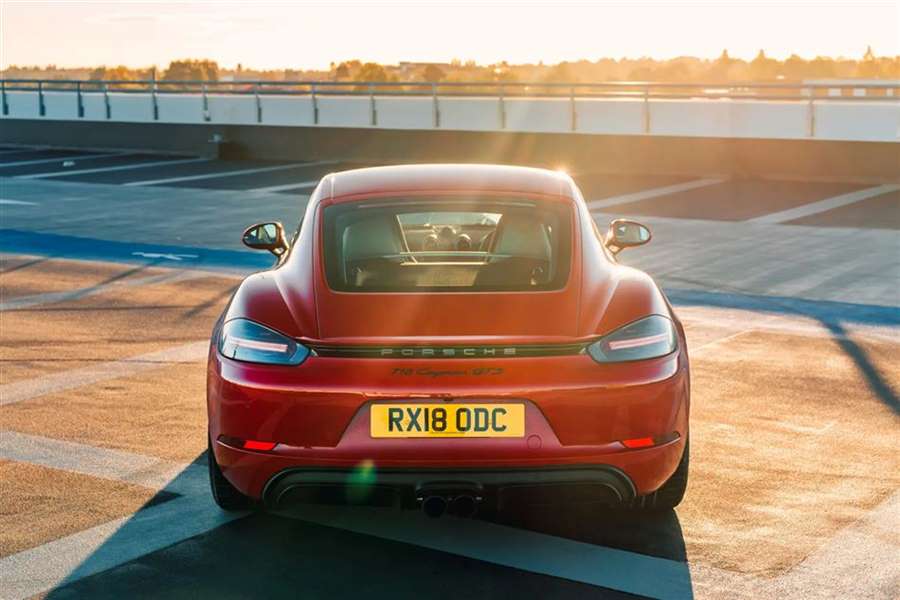
Boot space and storage
However, the best bit is the twin boot arrangement allowed by the mid-mounted engine. Where you’d find the engine under the bonnet of a conventional family car lies a deep, square-shaped 150-litre boot.
You’ll easily stow a couple of soft bags in there. And then there’s a further 125-litre luggage compartment under the rear tailgate. The Cayman has hidden luggage lugging powers, make no mistake.
Is it easy to park?
Visibility is good with the help of the large windows and door mirrors, but all models also come with front and rear parking sensors as standard. A rear-view camera is an optional extra.
Safety
718 Cayman is dripping in safety kit
Six airbags to protect you
Plenty of electro nannies keep you safe
The Cayman hasn’t been tested by Euro NCAP but Porsche is a brand renowned for its safety prowess. It’s well equipped with hardware – and software – to keep its occupants well protected in a crash. And many of the systems are designed to prevent an accident happening in the first place.
Every 718 comes with twin airbags in front of both occupants, built into the side of the seat bolster and the headliner to cushion bodies from the most serious impacts.
But just as important is the equipment helping drivers to avoid a collision: bi-xenon headlamps are standard (they’ll flick on automatically at dusk), the door mirrors are heated to clear frost on wintry morning and the huge brake discs clamped by four-piston callipers are supremely powerful, as you’d expect from a Porsche.
Porsche 718 Cayman interior, tech and comfort
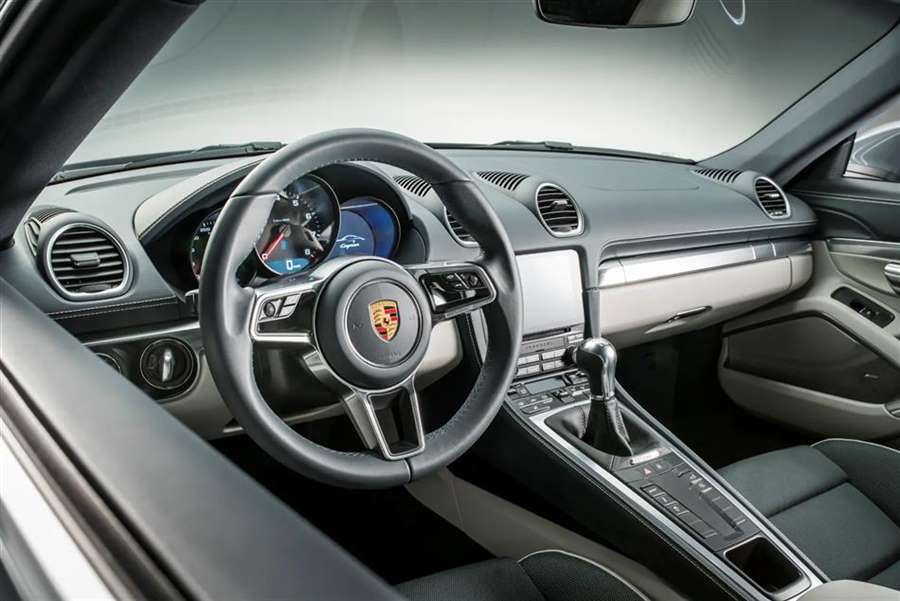
How is the quality and layout?
When you first climb in, you’ll appreciate the driving position; it’s snug but everything’s where it should be and you can see out in all directions.
The fit and finish is strong, with tight panel gaps and no squeaks and rattles. The materials used throughout the cabin are top notch too.
The analogue dials are clearly laid out behind the steering wheel sits a configurable display that can beam up maps or trip computer info with the use of a stalk. There are no steering wheel buttons to master here.
The infotainment system is a centrally mounted touchscreen and controls the audio, sat-nav and phone commands. It’s responsive and easy to use but because it’s small, it looks a little old in comparison with other Porsches.
The buttons mounted below can be a little tricky to read and aim for, since they’re small and the same size and shape as each other, but you get a rough idea of where everything is soon enough.
Comfort
Low-slung two-seater sports car
Choice of sports seats available
Mid engine = hot
You wouldn’t necessarily think of a two-seat sports car as being a comfy place to sit, but the 718 really is that good. For a car of this type, it’s easy to climb in and out of, although you should avoid the high-winged sports seats if you value everyday practicality.
Once you’re installed in the snug cabin, it’s a very comfortable environment. We’d recommend trying various different seats, as you can specify bucket chairs with extra support for track use. These may resist sideways cornering forces, but aren’t necessarily as relaxed and supportive as the standard items.
Cayman engines are located in the middle of the car, right behind the passenger and driver. This means the cabin can get quite hot and loud. The more extreme six-cylinder engine models can get pretty toasty during a hard drive, but in most day-to-day circumstances it’s not that noticeable.
Porsche 718 Cayman running costs and reliability
What is miles per pound?
Petrol engines 2.5 - 3.7 mppLow figures relate to the least economical version; high to the most economical. Based on WLTP combined fuel economy for versions of this car made since September 2017 only, and typical current fuel or electricity costs.
Fuel economy
Petrol engines 21.4 - 31.7 mpg
2021 Porsche 718 Cayman running costs
Enlarge1videoEnlarge90photo
Surprisingly close between four- and six-cylinder models
Maintenance costs won’t be cheap
But two-year service intervals welcome
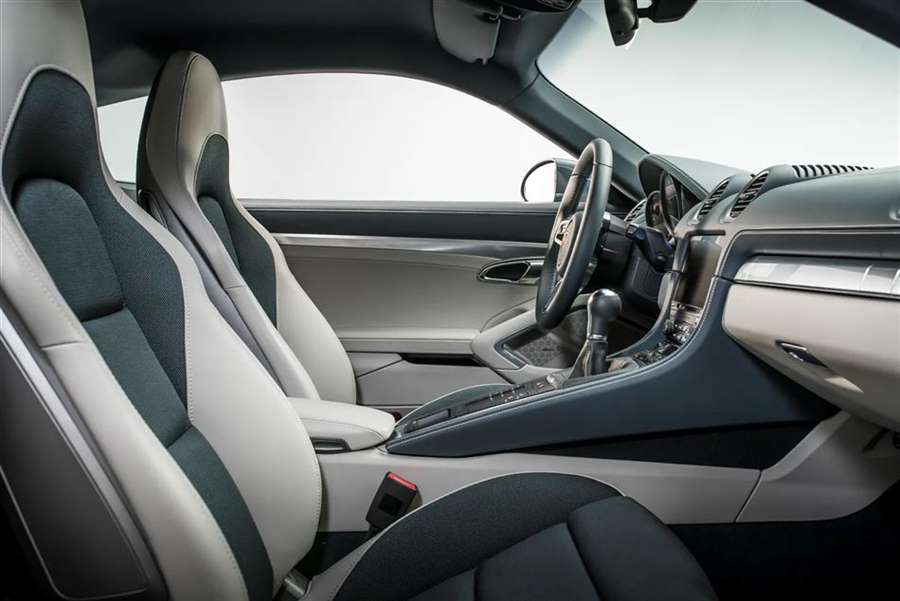
What are the running costs?
Let’s not beat around the bush. The Porsche 718 Cayman is not going to be a cheap car to run. But for a car of this type and pedigree, it needn’t break the bank, either. And anyone who can afford the £50k+ price tag shouldn’t baulk at the cost of running this two-seater.
All models come with stop-start, with CO2 emissions surprisingly close between the four- and six-cylinder cars, making you wonder what the benefit of losing two pistons was in the first place.
The 2.0-litre petrol is the cheapest to run and lowest emitting. You’ll get close to 30mpg in real-world driving and mid 30s if you’re really trying. The flipside? Enjoy a fast blast and fuel economy will quickly sink to the 20s, if not lower. The 2.5-litre is a similar story.
The six-cylinder 4.0-litre isn’t far off these figures, with mid 20s around town and reaching low-30s on a motorway cruise with the help of cylinder deactivation.
Servicing and warranty
The Cayman comes with a three-year/unlimited mile warranty as standard. Porsches only require servicing every two years or 20,000 miles, bringing welcome relief from big bills on a regular basis.
However, Porsche dealerships aren’t renowned for their low labour rates. You can expect hefty charges for consumables such as tyres, brake pads and exhausts, particularly if you take your car on track, so make sure you factor those into your budgeting.
Reliability
Proven platform, few known faults
Recall history is good on Cayman
Smaller four-cylinder engines still to be proven
The Cayman has been around in one form or another since 2006 and has established a strong reputation for reliability with few known mechanical problems. Earlier issues, such as ‘trunk clunk’ – when the tailgate would rattle over bumps in the road – have largely been ironed out.
The Cayman has only been subject to two recalls in its lifetime, and even then they were back in 2016. The recalls were regarding airbag control units and cross member sections.
Porsche 718 Cayman engines, drive and performance
It’s hard to believe the 718 Cayman is the cheapest car in Porsche’s range, given the huge performance levels on offer. You don’t have to go far back in the 911’s history to find models that accelerate slower than the Cayman.
View full Porsche 718 Cayman specs
2.0-litre
The base model gets a 300hp four-cylinder engine. It’ll still cover the 0-62mph dash in a sports car-like 4.9 seconds, but when compared with the rest of the range it’s pretty unremarkable. It’s methodical in the way it delivers power but never feels or sounds that exciting.
2.5-litre
Pick the more powerful Cayman S (with power upped to 350hp) and turbo lag (the delay in power delivery you normally experience as the turbocharger starts spinning) is even harder to detect.
It’s definitely fast (0-62mph in 4.4 seconds), but as it’s a four cylinder, it misses out on the whipcrack flat-six bark that has come to characterise generations of Porsches.
4.0-litre
A 4.0-litre six-cylinder non-turbocharged unit is offered with different outputs in the GTS 4.0, GT4 and GT4 RS models. It’s the engine to choose for hardcore driving enthusiasts because of its brawny power output and characterful engine note.
The main improvement over the other engines is in the power delivery. Throttle response is now what you’d expect from a Porsche and unlike the easy turbo power of the aforementioned models, the 4.0-litre needs a big hoof of gas to get going, with a full 5,000(ish)rpm before peak torque and a glorious, howling 7,800-9,000rpm redline, depending on the model.
This being a Porsche means in reality you only bother the redline in second gear on the road, as it tops out over 80mph, so using all of third is an easy way to find yourself in front of a magistrate. And while these engines sound undeniably better than the four-pot cars, they’re not as vocal as previous six-cylinder Cayman models, largely down to a socking great gasoline particulate filter blocking its airways.
What’s it like to drive?
One of the sweetest-handling cars on sale
Sublime poise and handling overall
Guaranteed to make you smile
This is a rewarding car to drive for both the enthusiast and the sports car newcomer. The poised balance provided by having the engine positioned amidships is the key to this agile handling, aided by rear-wheel drive. The 718 Cayman is seemingly plugged into your synapses, pointing into a corner the moment your brain sends messages to your fingertips.
Steering is well judged, quick and accurate, with no hint of the nervousness you’ll find in big brother the 911. The stiff suspension means the Cayman handles predictably flat on the road, with great poise in corners that isn’t easily upset by a lift or application of the throttle mid-bend, just predictable grip levels that are communicated via the wheel and driving seat.
It feels really friendly to use and instantly transparent from the first ten minutes of driving. This is not a car you need to dig into to find its limits – from the very first few miles it reveals everything you need to know – leaving little need for trial and error.
As such it can be driven in a number of different ways depending on your preference. Neat and tidy? That’s fine. Front wheels pinned and rears lit up? Also fine.
And the chassis is well set up for comfort. The suspension quashes bodyroll effectively and yet there’s real compliance here, even on the larger 20-inch wheels many buyers will spec.
Porsche 718 Cayman GT4 driving
Enlarge1videoEnlarge90photo
We’ve tested both the six-speed manual and seven-speed PDK automatic derivatives and can attest it’s really down to personal preference.
The DIY choice is a pleasure to use and suits the character of the car well; but if you live in a city or prefer autos, we’d heartily support the PDK choice too. Gearchanges are quickly and smoothly carried out, and this version is actually cleaner and more efficient.
The GT4 and GT4 RS models build on that incredible base with a host of track focussed upgrades. Big spoilers, a fully-panelled underbody and working rear diffuser are among the most noticeable upgrades.
What’s odd is that these models offer a deep well of capability without compromising drama or the ability to thrill. It’s not a case of taming an unwilling machine, but being able to pick your line time after time and knowing exactly how the car will react. It’s predictable and well-honed, which should make it feel benign, but it doesn’t. These models work less well on the road and cost a lot more, but they’re ultimately track toys that come with numberplates.
Porsche 718 Cayman verdict
Should you buy one?
Absolutely. The 718 Cayman is that rare thing: a high-quality sports car that’ll thrill when you’re in the mood, and just get on unobtrusively with the business of driving from A-B when you’re commuting.
We would urge you to add some key options if you’re using it every day. A reversing camera is a must, for instance. How far you want to go regarding other performance-enhancing equipment comes down to your personal preference. It’s unlikely models with lower suspension will really benefit you if you’re commuting in a Cayman, but the PDK automatic transmission will make your drive more relaxed. The manual is lovely and involving, but the clutch pedal can be quite heavy in its operation.
The four-cylinder units are very strong and provide excellent performance. The 2.5-litre brings with it a fine blend of power, performance and usability without being overly pricey and this is the one we’d recommend to people who’ll use a Cayman every day. But if you want it as a weekend play thing we urge you to spring for a faster and more visceral six-cylinder model.
What we like
You don’t have to spend the most amount of money to get one that will reward you. Granted, Porsche will certainly oblige if you want the best model, or if you want a bespoke one to your own specification. But we’re pleased to report that even if you bought an entry-level model, you won’t be left disappointed when it comes to driving fun.
What we don’t like
Very little. The standard level of kit can feel a bit mean, and the long gearing – especially with the manual gearbox – means you can’t fully utilise the performance.
Source: parkers.co.uk
Is the Nissan Qashqai the best used family car?
The second generation of the Japanese crossover is a common sight on our streets, and what adorns this car are low costs, comfort, and build quality. As such, it is a frequent choice on the second-hand market, and on this occasion we bring the advantages and disadvantages of the second-generation Nissan Qashqai model.
The second generation Nissan Qashqai was introduced in 2014, and used examples from the beginning of production can be found on the domestic market for around 11,500 euros. The redesigned version debuted in 2018 with new technology and several new units on offer.
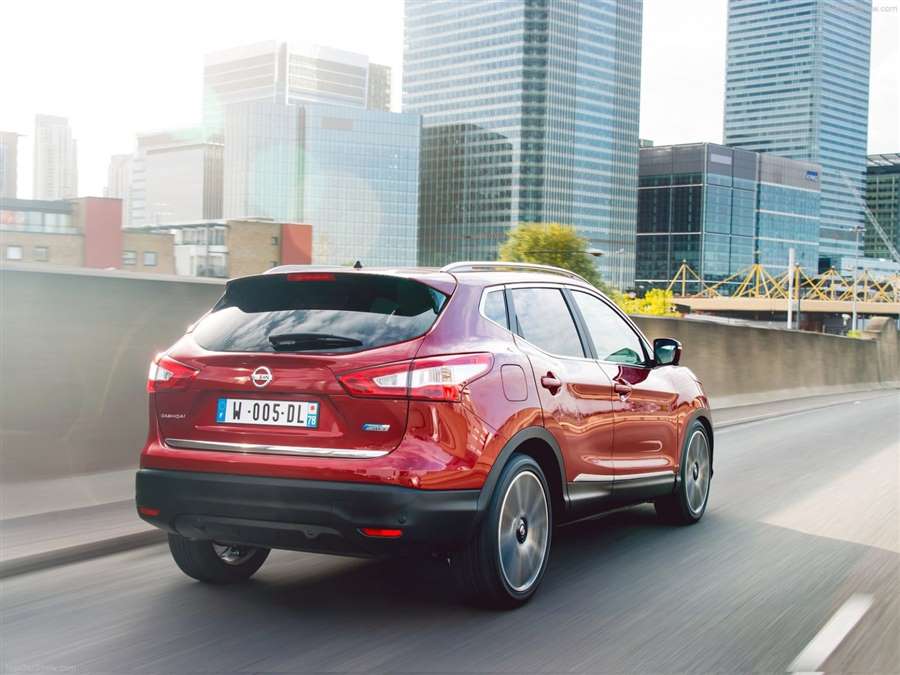
Originally, 1.5-liter and 1.6-liter diesel engines were offered, as well as 1.2-liter and 1.6-liter turbo gasoline engines. In both cases, the smaller units were actually preferable in terms of cost and sleekness. A CVT automatic transmission called Xtronic was available as an option, but the slightly noisier operation of the engine with this transmission turned many away, so they opted for a six-speed manual transmission. The redesign from 2018 brought some changes, but also a new range of engines, so a 1.3-liter gasoline unit with 140 hp or 158 hp was available.
As for the diesel, the 1.5-liter engine remains the same as before, but a 1.7-liter diesel with 150 hp was introduced in 2019. Some of the most important positive features of the Qashqai model are a high level of comfort and a feeling of spaciousness, primarily due to the comfort of the seats and suspension.
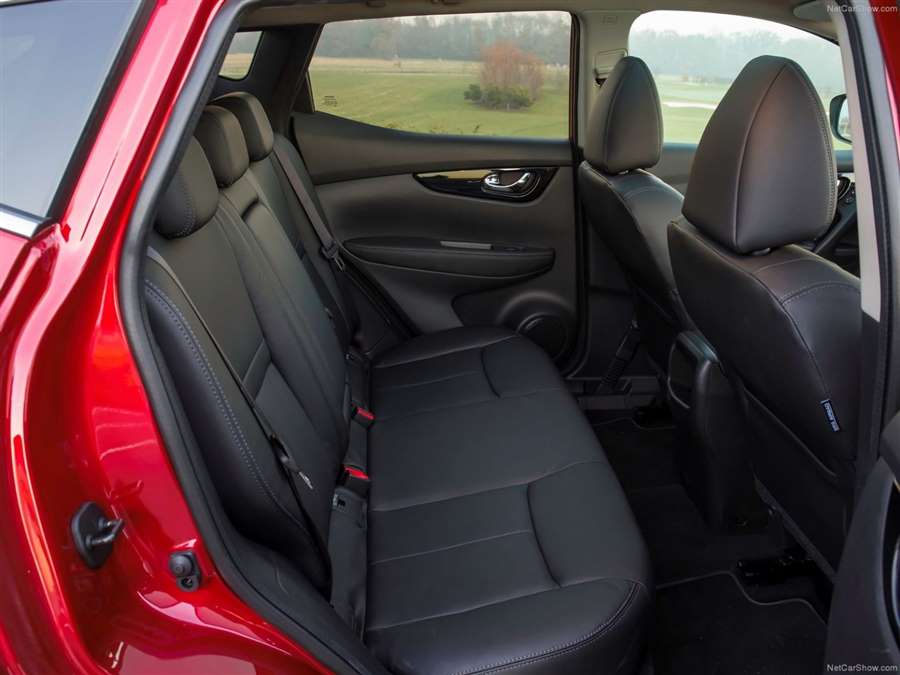
It should be said that the finish of the material is much better compared to the first generation, such as soft handles and feet, as well as much better sound insulation. The second generation Qashqai offers a sense of balance when driving, which is rarely found in any crossover, especially in corners where it inspires confidence when you step on the gas pedal.
When talking about engines, the best choice is economical diesels: 1.5 dCi (110 HP) and 1.6 dCi (130 HP). Turbo petrols are quieter, and also don't consume much, and have similar dynamics to diesels. The trunk has a volume of 430 liters, which is certainly not a record in the class, but it is quite enough for most needs.
As for the flaws, the Nissan Qashqai received the most criticism during its first years of production, and most of them were related to some "childhood diseases", such as the early failure of the factory battery, oil leaks on the valve cover, and the halogen lights were able to weaken quickly. .
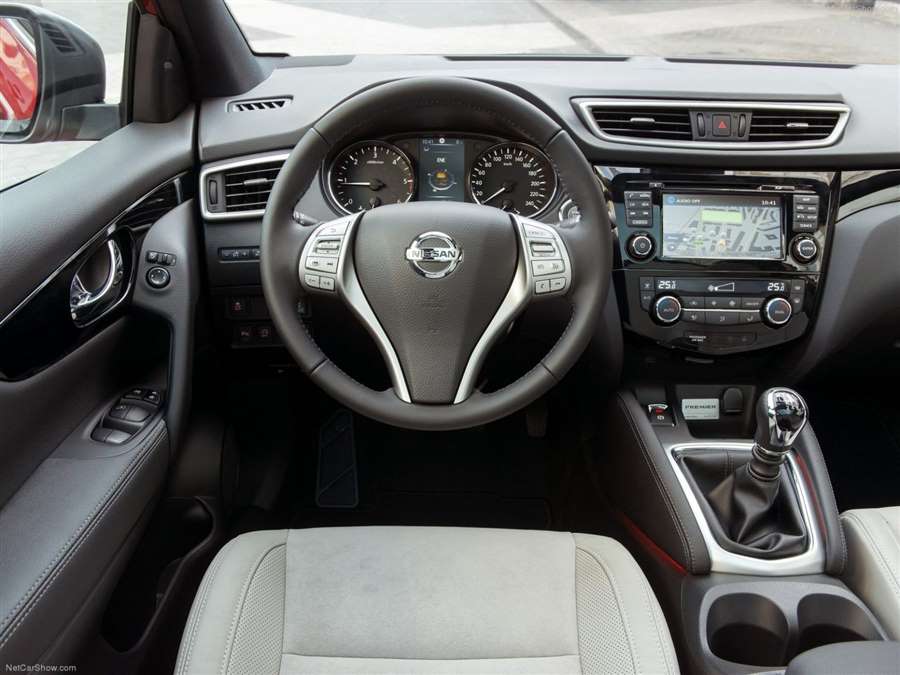
Among second-hand examples, diesels make up the overwhelming majority, and the most important thing is to find a well-maintained example because you won't have any problems with it. The durability and quality of the Nissan Qashqai model is both a virtue and a disadvantage when buying a used model. Because this crossover is very solidly built, which makes it somewhat resistant to use, you may have trouble determining the true condition and mileage of the car. That is why it is important to pay attention to determining the correct mileage, because its use could be well concealed.
As Auto Klub writes, the owners' experiences are excellent, and the second generation still looks modern, offering comfort, spaciousness, reliability and economy. It is a quality and versatile car with an excellent choice of engines and a very good chassis. Prices for the oldest models with the highest mileage start at 11,500 euros, while a well-equipped redesigned version will cost you more than 20,000 euros. With a little searching, you can find a decent copy with a price of around 15 thousand euros.
2023 Mazda CX-50 Review: Looks Aren't Everything
The decision: The all-new Mazda CX-50 is a capable — if unacceptable — reduced SUV that does most things effectively, however it doesn't do a lot to push Mazda's setup toward another path.
Versus the opposition: Given how firmly paired the minimized SUVs in our most recent correlation test were, it would be great assuming the CX-50 accomplished other things to separate itself from its opposition — or even its CX-5 stablemate.
At the point when Mazda uncovered the 2023 CX-50 in November 2021, it was obviously hopping on board the rough terrain vehicle fad that turned out to be progressively common in the market as the COVID-19 pandemic delayed and individuals searched any reason to escape the house. Rough terrain vehicles and trims are obviously the new shut down appearance bundles.
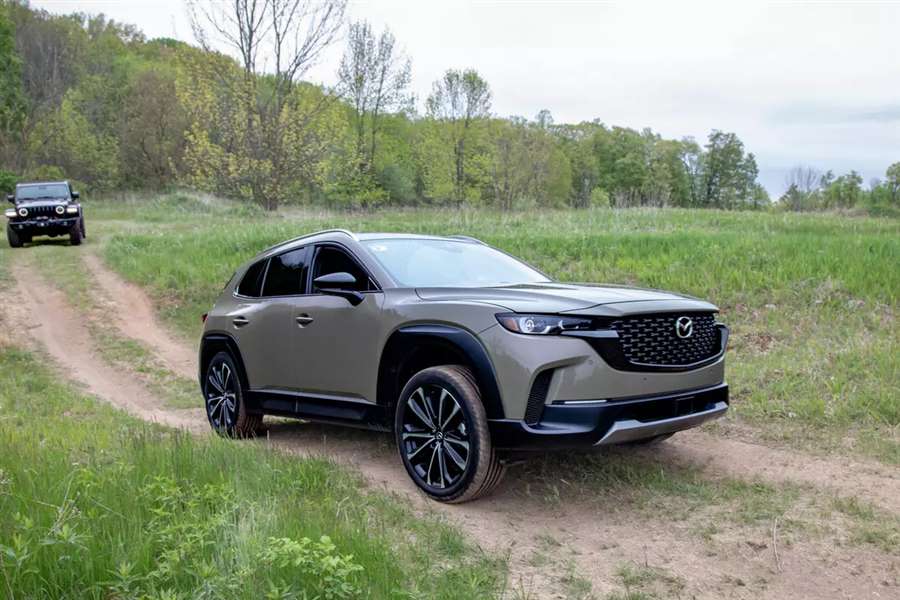
Related: 2023 Mazda CX-50 Vs. 2022 Subaru Forester Wilderness: Who Off-Roads Better?
The CX-50 has standard all-wheel drive, a six-speed programmed transmission and a decision of two 2.5-liter four-chamber motors: a normally suctioned variant with 187 strength and 186 pounds-feet of force or a turbocharged form making either 256 or 227 hp and 320 or 310 pounds-feet of force contingent upon whether it's burning premium gasoline.
We drove a reach finishing off Premium Plus CX-50 with the 2.5-liter super both now and again street to check whether it could bear outing in its very packed and serious section. Sadly, the CX-50 doesn't actually stand apart even in Mazda's own setup, where it's in direct contest with the CX-5 (for the time being, in any case).
Driving the CX-50
Regardless of utilizing an alternate stage, the CX-50 drives a ton like its CX-5 kin. One thing generally present in Mazda vehicles is open controlling, that is as yet the situation in the CX-50. Tragically, it needs other on-street capacities that could make the most of that: The ride is weak, and influences were unforgiving with the 20-inch wheels that come norm with the 2.5 super motor. Forceful cornering produces body roll and some understeer, however no more than you'll track down in basically any SUV in this fragment. Most contenders, nonetheless, additionally have guiding that feels substantially more numb.
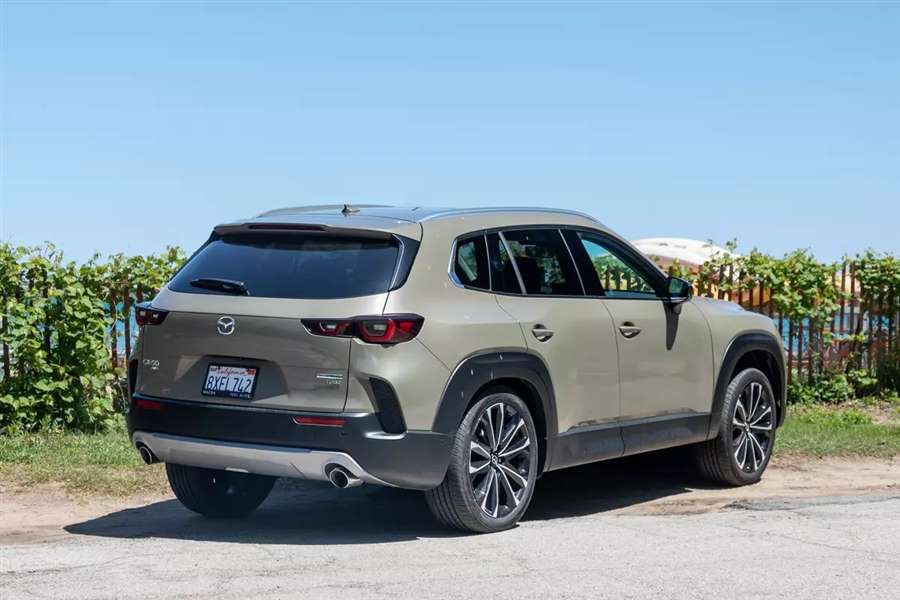
For more nitty gritty rough terrain impressions, you can peruse my drawn out contemplations here. Without driving a CX-50 outfitted with the Meridian treatment, which incorporates more serious off-road tires, checking exactly the way that competent the CX-50 could be is hard. We can address its exhibition with road tires and 20-inch wheels, however, and with that arrangement, the CX-50 effectively explored a light rough terrain course, yet it never felt cheerful doing as such. The CX-50 is intended to be the vehicle that gets you and your stuff to the trailhead, not one that goes down the path, yet in the majority of those cases, you'd be similarly as fruitful arriving in a Camry. The CX-50 isn't intended for serious or continuous going 4x4 romping, so assuming you're searching for something to that effect, look somewhere else.
It's conceivable the Meridian Edition, with its more modest haggles rough terrain tires, could feel both more fit rough terrain and cushier on asphalt, yet it's presumably not going to supersede a portion of the more able delicate roaders in its fragment, similar to the Ford Bronco Sport Badlands, the Subaru Forester Wilderness or any of the various Toyota RAV4 TRD models.
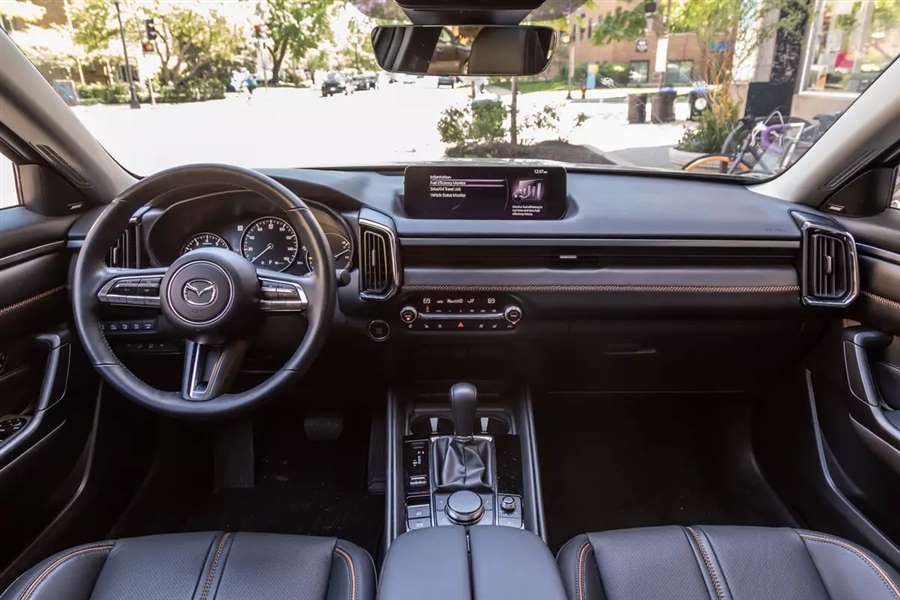
The CX-50's mileage is fair, at any rate, and there's a sad punishment for getting the more impressive super motor. The normally suctioned 2.5 is appraised 24/30/27 mpg city/thruway/joined, and changing to the turbocharged powerplant drops those appraisals just somewhat to 23/29/25 mpg. Obviously, to get the most pull and force out of the super 2.5-liter — 256 hp and 320 pounds-feet — Mazda suggests utilizing premium gas. That is obviously more costly than customary, and the 2.5 super doesn't give overpowering power on it; it's far-fetched that proprietors will miss the additional 29 hp or 10 pounds-feet of force assuming they decide on standard. The super motor gives sufficient power when called upon, however it can sound stressed and crude under heavier burdens.
The CX-50 likewise adds two new drive modes: Off-Road and a super selective Towing. Rough terrain helps a piece whenever difficulties arise, however there's no extra configurability past "Rough terrain" to assist with explicit kinds of landscape. Towing mode is select to super controlled CX-50s, which can tow 3,500 pounds versus the 2,000 pounds the non-super CX-50 can pull. The other driving mode worth focusing on is Sport, however that is simply to take note of that it doesn't do a lot to change the personality of the CX-50.
Happy with, Frustrating Interior
The front and back seats of the CX-50 don't feel a lot roomier — or truly entirely different by any means — from a CX-5. The CX-50's more forceful roofline and Mazda's most memorable power-sliding all encompassing moonroof cut into headroom a piece, yet there's not an awkward seat in the vehicle. The CX-50's freight region is likewise stunningly spacious, if essential, with two little cubbies for more modest things. (They were, for example, an extraordinary spot to put a few valuable six-packs of Wisconsin-elite New Glarus brew while driving home to Illinois.) We estimated the CX-50's freight volume at 18.13 cubic feet — almost indistinguishable from the 2021 CX-5 we estimated at 17.91.
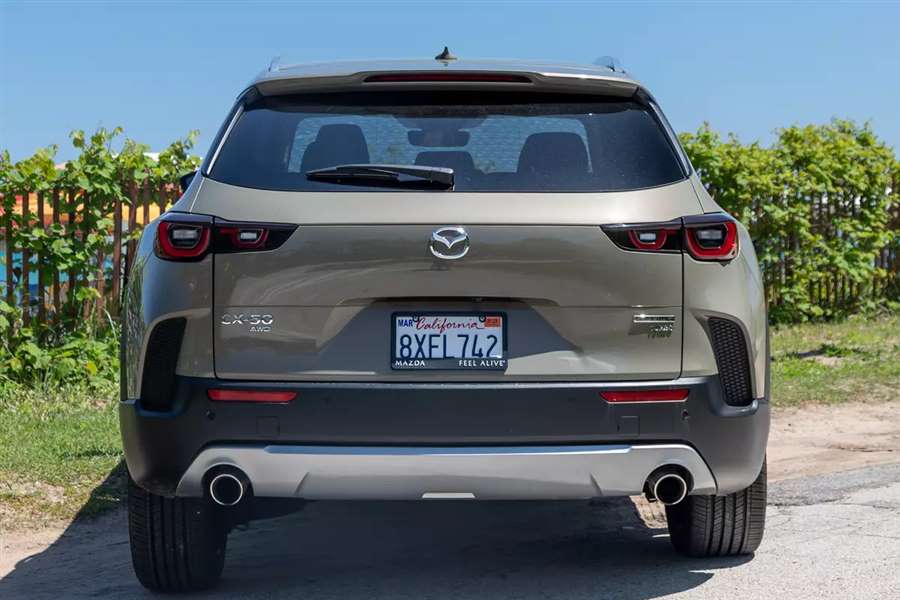
What's tricky is Mazda's infotainment framework. The bigger 10.25-inch show in our test vehicle (a 8.8-inch screen is standard) is in fact a touchscreen, yet it doesn't work as such as a rule. Contact control possibly works when the vehicle isn't moving; when the vehicle is driving, a handle regulator is the best way to explore the presentation and make choices. In any event, that was the situation before Mazda gave touchscreen usefulness back while utilizing Apple CarPlay and Android Auto. It's a brilliant choice given how much more straightforward it is to utilize a cell phone reflecting point of interaction like you utilize a cell phone. Both those connection points work remotely, however I saw some slight lagginess in remote CarPlay while rapidly burnning through tunes.
While bringing back touchscreen capacity is great, the actual screen is situated so high and profound on the dashboard that considerably longer-equipped drivers and front travelers might experience difficulty arriving at it. I switched back and forth between utilizing the touchscreen and the disappointing handle contingent upon the circumstance and how agreeable I felt inclining forward.
On the off chance that you're not utilizing Apple CarPlay or Android Auto, the remainder of the UI looks dated and can be confounding. It seems like Mazda is imitating early cycles of BMW's iDrive before the Bavarians dealt with every one of the issues.
A portion of the CX-50's rivals have their own idiosyncrasies and flaws with regards to this stuff, yet for an all-new vehicle like the CX-50 to have the normal, worn out tech that is baffled us in other Mazdas is frustrating.
Mazda means to be viewed as a more exceptional automaker than, say, Toyota or Honda, and the CX-50 is attempting to satisfy that objective. Its inside materials are a stage above contenders', and construct quality is first rate. Actual controls have a strong vibe, and an accessible head-up show is a superior touch. Contrasted and an Acura RDX, the CX-50 may not beat the competition, however contrasted and a Honda CR-V or Toyota RAV4, it is probably going to intrigue.
Wellbeing
The CX-50 has various standard dynamic security highlights, including Mazda's low-speed City Brake Support programmed crisis slowing down with passerby recognition, as well as path takeoff advance notice, path keeping help and vulnerable side observing with back cross-traffic alert. I didn't find these highlights excessively nosy or pointless during my time in the CX-50, which isn't generally the situation. The discretionary head-up show was great, if exceptionally fundamental in its usefulness.
As of this composition, the CX-50 has not yet been assessed by either the Insurance Institute for Highway Safety or the National Highway Traffic Safety Administration. In our own Car Seat Check, the CX-50 procured generally Bs and one A grade - write Cars.com.
Bugatti W16 Mistral
Ever since the Veyron was introduced in 2005, the W16 engine has been the heart of every Bugatti. The passenger car that brings the W16 era to an end was always destined to be special: exclusive, elegant and powerful.
It has to be the best of its kind. This is the W16 Mistral: the ultimate roadster.
Mate Rimac, CEO of Bugatti Rimac, states: “For the final appearance of Bugatti's legendary W16 engine, we knew we had to build a roadster. More than 40% of all Bugatti vehicles ever built were open-top, establishing a long line of performance icons that - to this day - are revered around the world. There has been no roadster in the Chiron era until today, so the introduction of the Bugatti W16 Mistral continues this legacy, driven by overwhelming demand from our customers to experience the powerful performance of our iconic engine. The W16 Mistral opens the next chapter in the story of the Bugatti roadster, inspired by a century-long legend."
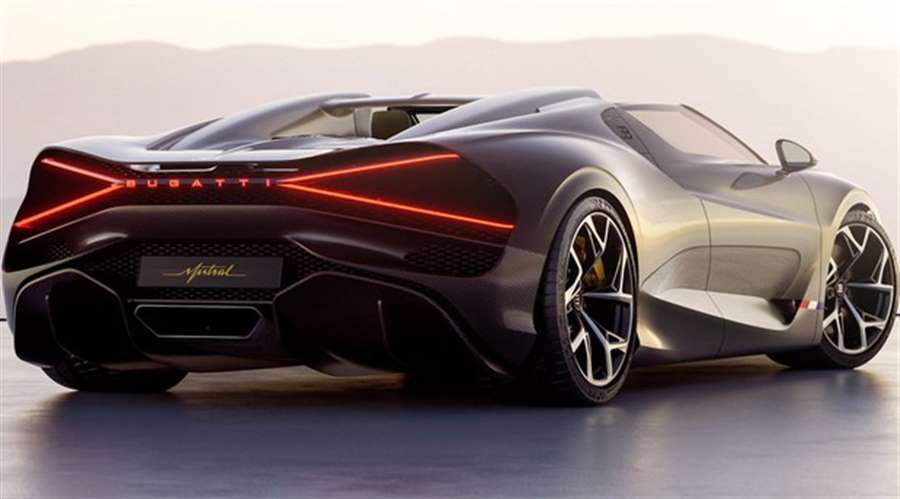
For a car as evocative and important as this one, a lot of attention was paid to the name it should bear. Far more than a simple development of the Chiron, the roadster needed a name associated with freedom, elegance and speed. The inspiration came from the mistral, a strong wind that blows from the Rhône valley, through the cities of the Cote d'Azur in southern France and into the Mediterranean. And with an engine so central to the character of this roadster, it stands side by side with this powerful wind: the W16 Mistral.
Built around the definitive incarnation of the 1600bhp W16 engine, the W16 Mistral offers performance unlike any open-top car offered to date.
Achim Anscheidt, Bugatti Design Director, points out: "We know that the W16 Mistral will always hold significance in the Bugatti story, marking the last time that perhaps a better automotive powertrain was used in a road-going production car." We, as a design team, felt enormous pressure to deliver a style that would immediately convey this momentous moment, drawing inspiration from some of the most beautiful roadsters in Bugatti's history."
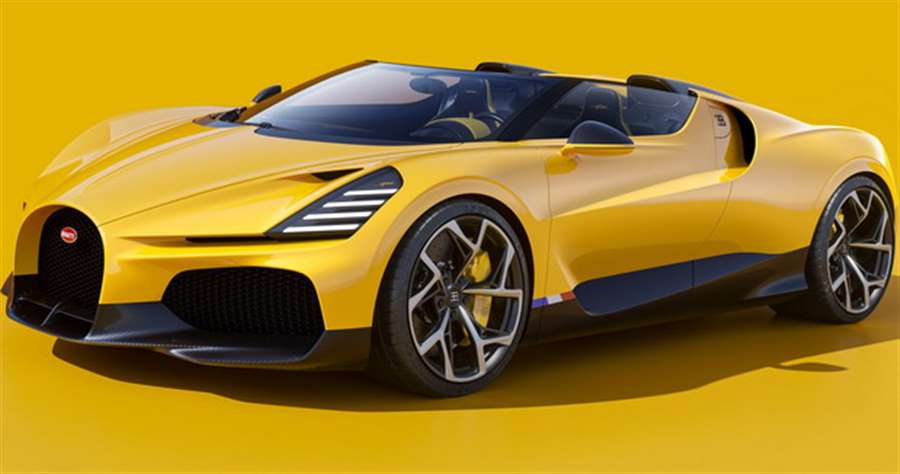
Their muse would be the 1934 Bugatti Type 57 Roadster Grand Raid, a sporty roadster that represents the pinnacle of elegant design. Finished in two-tone black and yellow, it provides the perfect inspiration for this watershed moment in the Bugatti story. The Bugatti W16 Mistral debuts in colors inspired by the Bugatti Type 57 Roadster Grand Raid; warm black with hints of brown and subtle yellow accents. Not only is it a tribute to the iconic body, but also to Ettore Bugatti, who chose the black and yellow combination for many of his personal cars, including his Type 41 Royale. For brand enthusiasts, it's a timeless visual pairing.
The W16 Mistral captures the essence of the Grand Raid's V-shaped windshield and develops it into a modern work of art. The curved windscreen that seemingly wraps around the A-pillars blends seamlessly with the side windows and creates a 'visor' effect that hints at the levels of motorsport performance offered by the W16 Mistral. The windshield itself is a marvel of engineering, curved enough to create a rounded visor design, without distorting the driver's vision. The upper line of the windshield and side windows flows deliberately around the side air intakes. This character line then flows back under the side glass.
Anscheidt continues: "To reflect the new character of the W16 Mistral, we also completely reinvented its front end, in line with the vertical layout of our unique or rare models such as the Divo and La Voiture Noire. It is immediately imbued with a sense of exclusivity; the vertically stacked headlights have been completely customized, and the familiar horseshoe-shaped grille has been reimagined to be much more three-dimensional; both deeper and wider.
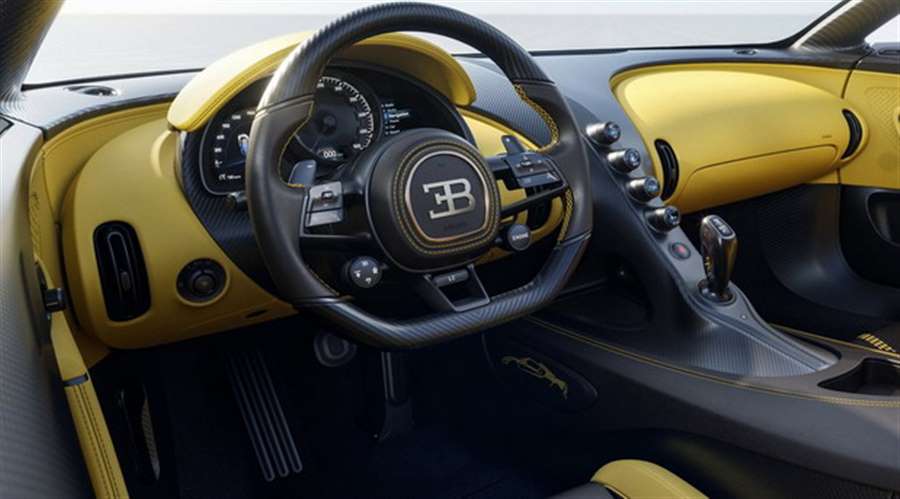
Designing a car like the W16 Mistral requires careful practice of Bugatti's 'Form Follows Performance' design mantra, with every component written not only to set new standards for beauty, but also to play a role in achieving entirely new levels of performance.
Frank Heyl, deputy director of design at Bugatti, said: “The headlights themselves are intricately shaped, including a four-light signature that subtly hints at the W16 Mistral's four-wheel drive and four turbochargers. But their three-dimensional surface also functions as an aerodynamic aid that directs air through the light and out through the wheel arches to improve aerodynamic drag."
But the functional design highlights don't end there. The new induction air vents behind the headrests have been developed from the ground up with rigorous rollover tests in mind, so each one is made from a carbon fiber structure that can support the full weight of the car in the event of a rollover. This new intake layout also enriches the driver's W16 experience, accentuating the orchestra between the low, powerful, rumbling
of this sound. It is an unsurpassed auditory sensation in the automotive world.
To develop unparalleled levels of elegance and excitement, the Bugatti W16 Mistral features the latest engineering innovations. Bugatti's advanced composite materials are paired with state-of-the-art 3D printed titanium and aluminum components to ensure striking design, superior performance and rugged reliability.
Detailed analysis of the W16 Mistral's dynamic stiffness allowed engineers to develop lightweight solutions that would ensure optimal handling and performance in the most extreme conditions.
The interior of the Bugatti W16 Mistral has been carefully refined to provide an experience that is both elegant and luxurious, yet functional enough to ensure that all information is easily visible at speeds of up to 420 km/h. Dedication to the quality of materials remains a hallmark of Bugatti design. But in this swan song for W16, there's also a brand new design.
For example, the leather used on the newly designed door panels, meticulously tested and manufactured to Bugatti quality standards with a vision of regular use over a hundred years into the future. And in a nod to the W16 Mistral's illustrious predecessors, the gearbox - made from a solid block of aluminum - with a touch of wood and an amber insert with the famous 'dancing elephant' sculpture locked inside. Iterations of this sculpture featured the hood of the legendary Type 41 Royale.
When Bugatti's last roadster, the Veyron 16.4 Grand Sport Vitesse, set a world speed record of 408.84 km/h in 2013, its 8.0-liter W16 had 1,200 hp. The W16 Mistral has 1600 hp, using the same engine that powered the Chiron Super Sport 300+ to record speed in 2019. There can only be one goal: to become the fastest roadster in the world once again.
Mate Rimac continues: "The unification of the roadster format and our W16 powertrain is absolute perfection." With the roof removed and a pair of large air intakes directly behind your head feeding around 70,000 liters of air through the engine every minute at full capacity, driving the Bugatti W16 Mistral connects you to the intricate workings of this revolutionary drive like no other Bugatti has ever done. "What we're also continuing with the W16 Mistral is the legacy of Bugatti roadsters, each unmatched in design, performance and rarity, stretching back to the origins of Bugatti." The Type 40, Type 41 Royale, Type 55 Roadster, Type 57 Roadster Grand Raid that inspired this car, or even the incredible elegance of the Type 57SC Corsica Roadster - Bugatti has always been associated with the purity of open-top driving. So, although the W16's legacy on the road ends with the W16 Mistral, we continue the legacy of the roadster, first established by Ettore Bugatti over a century ago."
Only 99 examples of the Bugatti W16 Mistral will be produced, priced at €5 million net, with deliveries scheduled to begin in 2024. The entire production run of the W16 Mistral has already been sold out.
2023 Hyundai Palisade First Drive: A Solid Technopunch
Hyundai's three-line family SUV is currently more clever than any other time.
Hyundai's drive into the SUV market major areas of strength for is — it's not difficult to fail to remember the Korean automaker had a terrible SUV setup only quite a while back. Presently it has six models covering essentially every section of the SUV market. Furthermore, when the Hyundai Palisade hit the roads quite a while back, it immediately turned into a deals hit famous with families who needed style, worth, and space for eight. With the new 2023 Hyundai Palisade, a midcycle update brings some crisp styling components and more innovation, in addition to extra solace highlights. We headed out to the lovely streets outside Asheville, North Carolina, to test the refreshed Palisade and attempt the invigorated SUV firsthand.
Anyway, What's New?
Alongside another grille and a few outside subtleties, the 2023 Hyundai Palisade is presently 0.6 inch longer than before because of a leveled up front shade. The back overhang is more limited, and the wheelbase continues as before, however by and large length is currently 196.7 inches. Albeit the inside aspects didn't change, creators took these actions to give the Palisade a superior position in profile view — and it paid off.
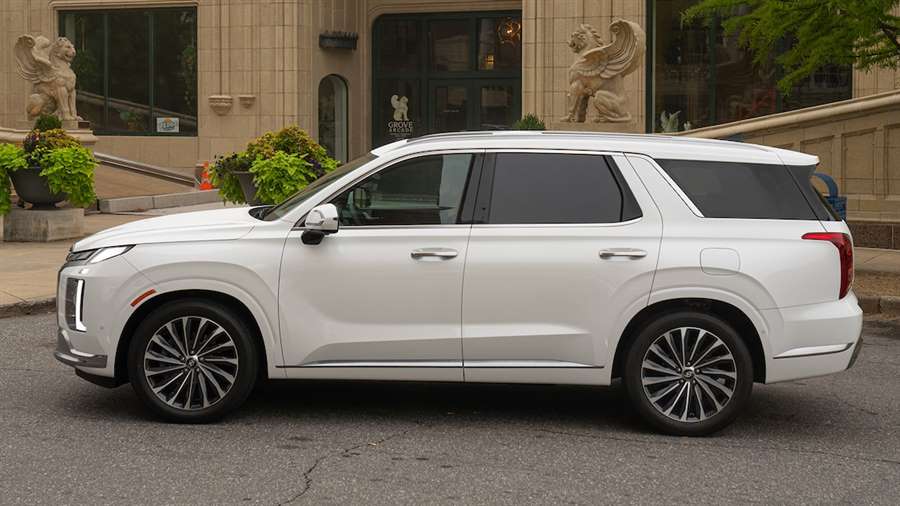
Inside, Hyundai added solace highlights across each of the three lines to satisfy a wide assortment of travelers. Taking a page from sister brand Genesis' Ergo movement situates, the Palisade adds a rubbing component to the driver's seat, and the subsequent line currently flaunts headrests that curve to give sidelong head support. Warmed seats are currently presented in each of the three columns, and the first and second line keep on offering ventilated seats.
Hyundai's remote savvy leaving help is accessible without precedent for the Palisade, and that implies drivers might escape their vehicle and push the SUV ahead and in reverse utilizing the key. Another back traveler side airbag and it are likewise present to stop impact aversion help.
Educated
Families who missed having a Wi-Fi area of interest in the Hyundai Palisade will be blissful, as Hyundai joined forces with Verizon to permit drivers to now associate up to five gadgets on the double. A three-month preliminary is incorporated, yet proprietors from that point should pay $20 each month to utilize this element. In-vehicle Wi-Fi areas of interest are the same old thing, yet the 2023 Hyundai Palisade is the first of the organization's models to offer the innovation.
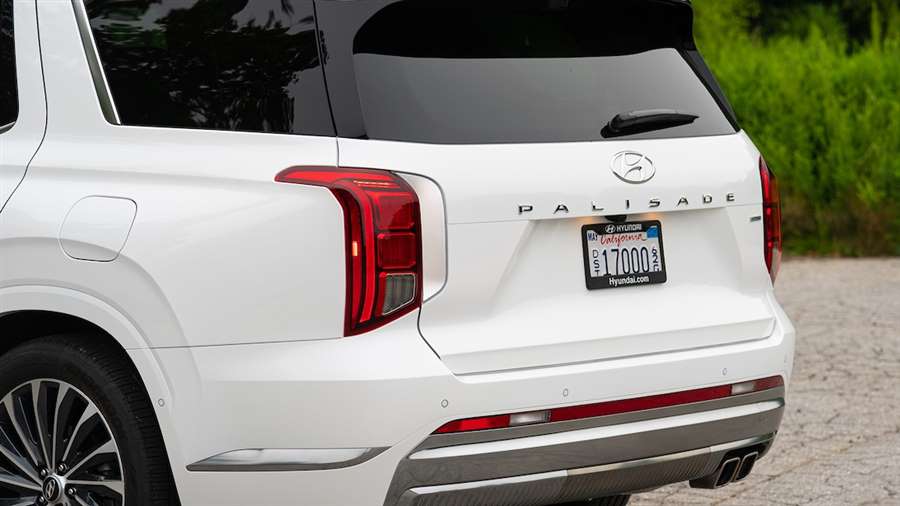
Another advanced key permits Apple and Samsung clients to lock, open, and begin the Palisade with their telephones. Working with NFC innovation, just put your telephone on the entryway handle to open the Palisade. To begin the vehicle, you should put the telephone on the remote charger (where there's another NFC sensor).
The assignment is simple, and there are five advanced keys in absolute that can be imparted to companions through instant message. Proprietors can change the settings of every one of those keys to just lock and open the Palisade, and proprietors can eliminate key access without any problem. The best part is that the NFC sensors work in any event, when your telephone is dead, and the tech works with the Apple Watch, too.
Individuals acquainted with the old Bluelink application realize there were a couple of constraints of what you could do in the Palisade. The 2023 model extends the rundown of highlights; it presently turns the warmed and ventilated seats on and off and sets the temperature when the proprietor begins the Palisade from a distance. Proprietors can likewise see and get warnings about entryways and windows left open, as well as fuel levels.
The equipment refreshes likewise permit two driver profiles in the Bluelink application and the computerized key, so in the event that you share a vehicle with your better half, the radio presets, seat and mirror positions, and temperature will naturally change contingent upon who opens and starts the vehicle.
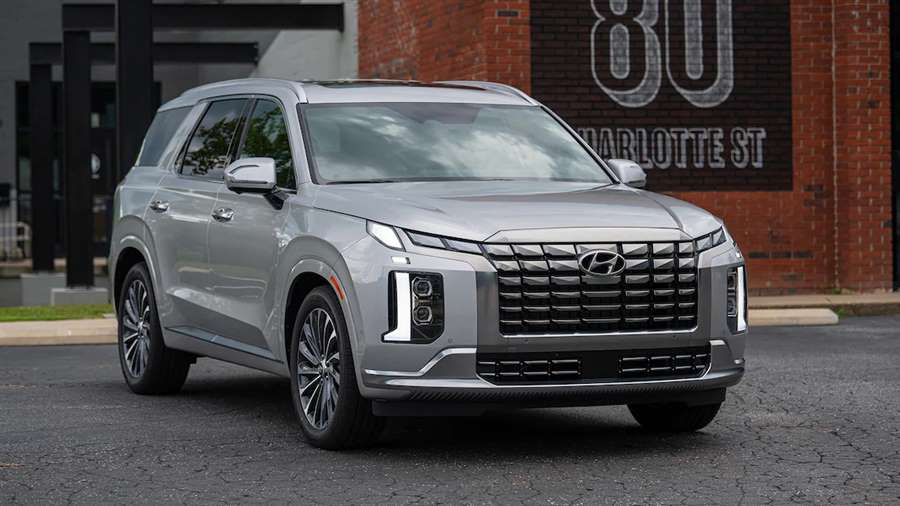
On The Road
New for 2023 is the XRT trim, which adds rough styling and hazier medicines outside, yet there are no equipment upgrades, for example, off-road tires or better methodology and takeoff points. We went through a portion of a day driving the XRT on city streets close to Asheville and on trails around the Biltmore Estate, and we were by and large satisfied with the manner in which the SUV took care of.
There are no mechanical changes to the 2023 model; each Palisade keeps on being fueled by Hyundai's 291-hp, 262-lb-ft 3.8-liter V-6 motor mated to an eight-speed programmed. The XRT we drove was outfitted with all-wheel drive, which was valuable during the rough terrain area. On sloppy pieces of the path, the Palisade exhibited great foothold and straight power conveyance, making it simple to vanquish obstructions. Albeit the path was generally a back road with a couple of grooves and puddles, it was a decent portrayal of what families will experience while heading on a setting up camp outing.
Out and about, the ride was for the most part agreeable and calm, with the guiding tuned on the lighter side and the motor conveying sufficient punch to go over Asheville's bumpy midtown roads without fight. Before, we've grumbled about the Palisade's stiffer ride contrasted with the Kia Telluride, but since of our restricted time in the driver's seat until further notice, we'll hold back to deliver our full judgment once we can get a 2023 model in our grasp for testing.
Would it be a good idea for me to Buy A Palisade?
The 2023 Hyundai Palisade is accessible in five different trim levels — SE, SEL, XRT, Limited, and Calligraphy. Costs start at $36,245 for the SE and ascend to $50,195 for the Calligraphy. The all-wheel-drive choice adds $1,900.
The midcycle update for the 2023 Hyundai Palisade could look gentle outwardly, however it's critical when you take a gander at all the new innovation that is gotten on. With remote stopping, a computerized key for Apple and Samsung, and more highlights for the Bluelink application, the Palisade feels refreshed and present day. Furthermore, Hyundai figured out how to add that large number of highlights while keeping costs cutthroat.
Source: motortrend.com

